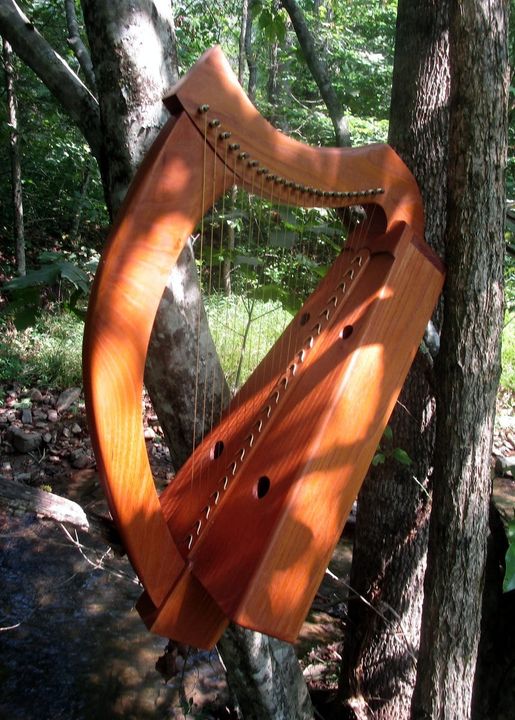A few years back every trip to my favorite lumber-man included a spiel for stack of mulberry wood he had. It looked unsuitable to me for harp making, too dense, and the grain too coarse. But when the third trip there for sycamore and walnut included the spiel for the mulberry, I bought a dozen board feet just to play with it.
It turned out to be magnificent for harps! Just the right mass for plenty of sound and it readily took very tight and strong glue bonds.
So I went back later to buy the rest. Alas, he’d sold 3/4ths of it but I still managed to get about 200 board feet and made a good number of harps from it. Mulberry wood is to be had from specialty wood suppliers — for a king’s ransom. But the wood I use is opportunistic. It’s whatever the logger, sawyer, and lumber-man has. This must have been a matriarch of a mulberry tree! It yielded completely clear quarter-sawn boards over 10″ wide.
Now, sadly, this is the last harp from that magnificent stack of wood. The Ancient Muse, 21 brass strings, and the natural color of mulberry wood finished with tung oil.
But wait! In sorting through a stack of cherry boards to start the next round of harps, I came across some wood I’d though from the feel of the surface gran to be oak. But when I hefted the boards to stack the cherry, the wood was far too light to be oak. It appears to be another 50 board feet or so of mulberry!
Not going to use it right away, but look for it to appear here in the future. In the mean time, this mulberry harp is available.
